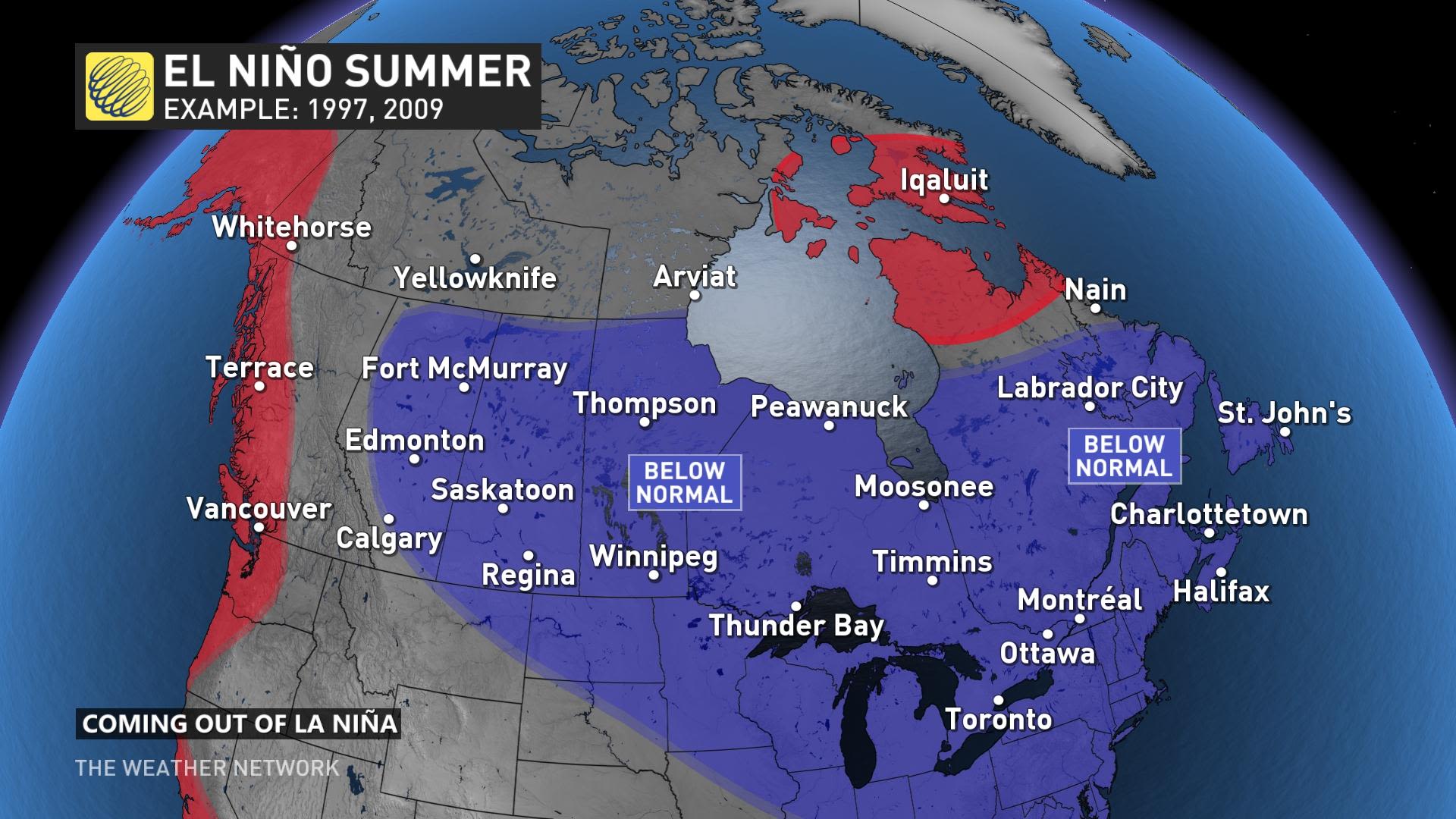
Summer is still months away, but that’s not stopping us from looking into the crystal ball when it comes to weather predictions.
Be it a summer wedding, a camping trip, or a massive festival, you’re going to want to be prepared.
Well, The Weather Network is giving early insight into whether you should prepare to party in the rain, or in the smoke.
In its summer outlook, the network suggests Canadians would be in for two possible outcomes, and both offer a mix of good and bad.
It all has to do with that expression that weather folks kick around a lot: An El Niño.
“If the forecasts hold up, we’re standing at the crossroads between two possibilities. The first is a leap straight from La Niña into El Niño, while the second is a slow and steady transition from one to the other.”
National Oceanic and Atmospheric Administration in the U.S. says an El Niño is when the sea surface temperature and precipitation shift from normal across the Pacific Ocean which can influence weather and climate patterns around the world. In its recent outlook, it predicts that this could happen between May and July this year.
A fast switch would mean a more comfortable summer for most of the country, similar to what we saw in 1997 and 2009, and fewer storms and hurricanes in Atlantic Canada.
However, west of the Rockies it could mean hotter temperatures.

If it’s a gradual shift and changes in the late summer, we could see above-seasonal temperatures and meteorologists suggest that might look like the summer of 2012, 2017, and 2018.

The Weather Network
To refresh your memory, 2017 and 2018 were historically bad wildfire seasons in Western Canada and many might remember the seemingly endless smog-filled sky that wreaked havoc on the health of some residents and impacted the travel industry.

A thick haze from the wildfires hovering over Vancouver in 2017.
(Amanda Catching / Flickr)
“We may experience an extended period of “neutral” conditions when water temperatures in the eastern Pacific hover right around where they should for the season,” the network said.
It’s also not as common to see this kind of system in the summer.
“Historically, Canada is mostly affected by El Niño during winter and spring. Milder than normal winters and springs occur in Western, Northwestern and Central Canada. Generally, El Nino does not significantly impact Eastern Canada, including the Maritimes, but it may reduce tropical cyclone activity in the Atlantic Ocean.,” Environment and Climate Change Canada said.
But don’t prepare for the end of the world just yet, experts suggest the next month will provide greater insight into what July and August will feel like weather-wise.
Are you hoping for a hot summer? Let us know in the comments.
